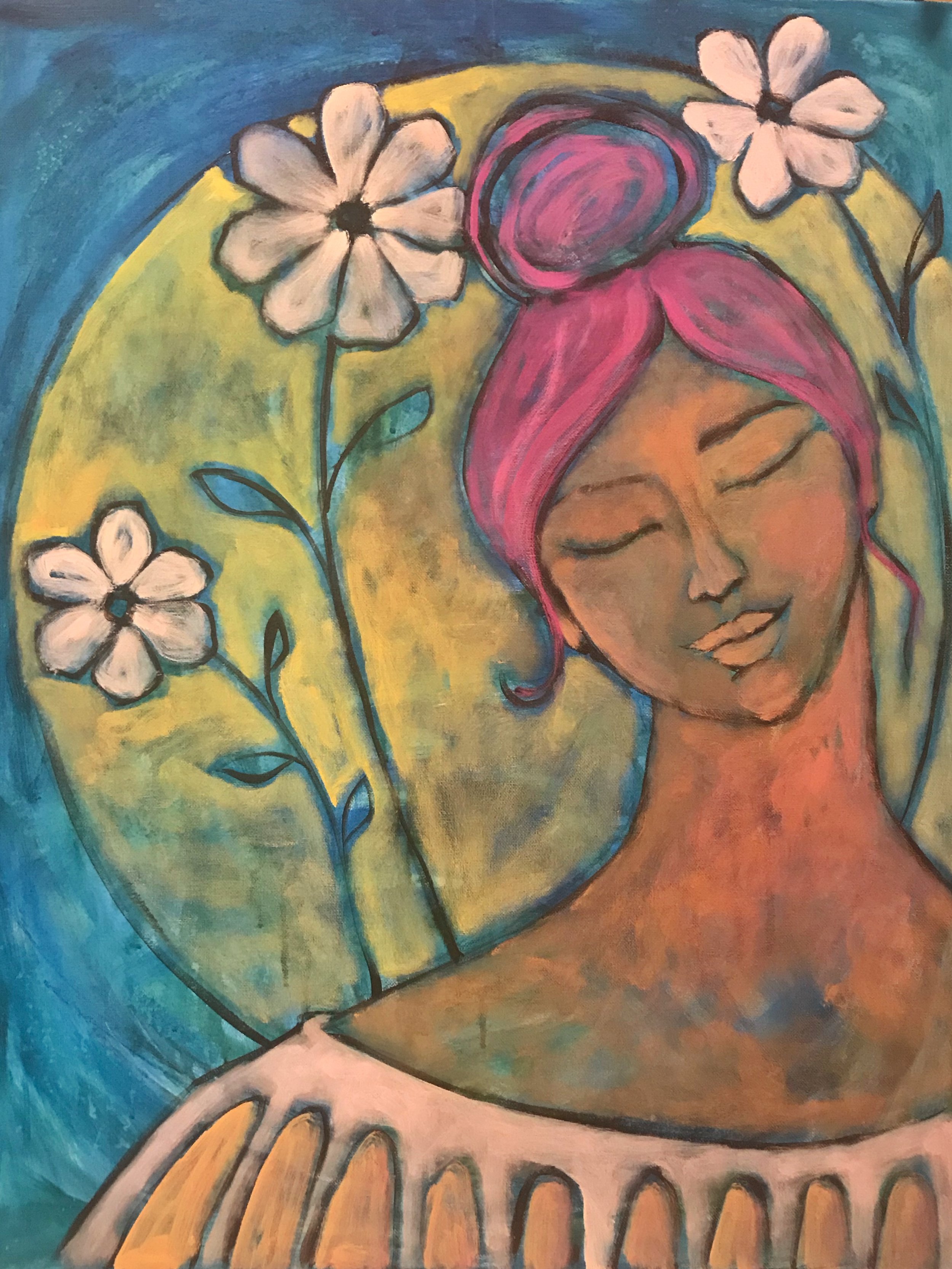Meet…. Your Mind
“You are the sky. Everything else is just the weather.”
Yogic Teachings on the mind & Its Mysteries
* teachings of Swami Sivananda
What is the Mind?
The mind is in the astral body, and is subtle and powerful.
It is our instrument of perception.
Like a pair of glasses which you use to see through, the defects or tint of the glasses will make you perceive defects outside and will colour what you see.
In “Bliss Divine” Swami Sivananda says about the mind, “The activity of the mind is the cause of all appearances. So long as there is the mind, there are all these distinctions of big and small, high and low, inferior and superior, good and bad, etc…”
The thinker is different from thought. Mind is as much your property and outside of you as your limbs, the dress you wear and the building you dwell in.”
Sitting with the body still and upright one begins to watch the mind and thoughts.
When one looks within and tries to become aware of the thoughts one starts to understand the mind.
Why do we need to control our mind?
What we perceive externally is in fact a reflection of the quality and conditioning of our mind.
If we are angry then we will find a reason to be angry about anything.
If we are depressed, everything looks depressing, and so on.
The whole world is in our mind. We have the feeling that the world is a big place and we have no control over it. We feel victimized by a lot of things.
Yoga helps us to regain clarity and power by helping us to control our mind.
The process of going inward to find answers means finding out the conditioning of our mindset and adjusting it to reality, thus bringing us to a true vision of ourselves and of reality, and freeing us from seeing distortions or illusions.
Mind and Emotions
To be able to control the mind, we have to be detached from it and know that the mind is not us, but only our instrument.
In the same manner, a cloud covering the sun may make us think that the sun is not there, but if we know that the sun is always there, then we can feel and see that the black and cold is just a temporary state.
The mind can go through different states but you can make it change if you do not believe in what you see or feel as being yourself. You stay detached, and you know that the mind is not you.
Instead of saying, “I am angry”, you say, “There is anger in my mind.” Instead of saying, “I hate this person”, you say, “There is hatred in my mind.”
Yoga, by slowing down the body and mind, help you cultivate this process of detachment.
How the mind works
Now, we will give you a few analogies in order to help you to understand the science of the mind and to recognize your own mind.
We are not aware of the functioning of the mind and become victim to it.
Learning how the mind works is like learning how to drive a car, so that we are able to guide the mind instead of the mind creating havoc without our control.
Mechanics of the Mind
Mind is like a lake; it constantly has thought waves. Swami Sivananda says that the mind havocs through the power of fluctuation. That I why the meditator endeavors to calm the thought waves down by concentration. A clear lake without waves is capable of giving you a true reflection of yourself (sattvic mind); a wavy lake distorts the reflection (rajasic mind); a muddy lake will not allow you to see clearly (tamasic mind).
Mind is like a drunken monkey; it is very restless and jumpy. Swami Sivananda says that the mind has wandering habits. It wants variety. Thoughts are disorderly and random, without much continuity or focus. Know this and learn to keep the mind more focused.
Mind is like a wild horse; it does not like to be tamed but likes to go its own way. Like a spoiled kid or a badly trained animal, the mind does not like to be trained and follows its own will, resisting all attempts to control it. Thus, one has to be gentle with the mind and slowly gain its trust to guide it in the right direction.
Mind is like a shy lady; it likes to hide and not be seen. It is difficult to reveal the secrets of the mind, as it will not cooperate easily. However, when one is able to see it for what it is, the turbulent mind calms itself down.
Mind is like a music record; it has grooves and habits. Everyone’s mind is conditioned specifically by previous experiences and habits. Sometimes, the record is scratched and bad tunes are played – as in the case of our repeated bad patterns – we need help sometimes to lift the needle and change the groove to a more positive habit.
Mind is like a fast-spinning fan; it can move very fast and you cannot distinguish the thoughts, but the thoughts can harm you. This is why, in Yoga, we learn to slow down the thought waves through asanas, pranayama and self observation in order to switch the patterns of thought. This analogy also shows that the concentrated mind is very powerful; a concentrated person may appear to be doing nothing, and yet his mind is extremely active.
Mind is related to body; that is why if you straighten your posture (asana), you straighten your mind. Asana practice is the best way to begin controlling the mind.
Mind is related to the breath; that is why if you calm down your breath and control the prana (pranayama), you control the mind. The breath is like the wind that creates the waves on the lake; it is difficult to control the waves, but if there is no wind, there are no waves.
Mind is related to the senses; controlling the senses will calm down the mind and controlling the mind can reduce the effect of the sensory stimulation that would agitate the mind. If the mind is kept focused, the senses will not operate, as the senses can not operate without the cooperation of the mind. The idea is that we are not victims to sensual influences and that we have ways to escape the allurements of the senses.
Mind, although fast, can only think of one thought at a time;if you feel stressed out, simply do one thing at a time. This is an important idea as it helps us to understand what concentration is, and why we need to concentrate on a positive thought, like a mantra, in order to reduce stress and worry.
Mind functions with names and forms; the mind itself is limited as it only functions along with words and images. This is why we use words or images to focus on; we understand that words and images are the limited way to express the reality that is beyond the grasp of the mind. This world as we know it is just the world of names and forms, and there is another reality beyond it. That reality can be experienced only when we go beyond the mind.
The mind functions by association. We can use this associative tendency of the mind to eliminate unhelpful thoughts and accentuate helpful thoughts.
Transcending the Mind
It includes working with the three levels of our mind, the subconscious, the conscious and the super-conscious.
Yogis want to clear the subconscious (instincts and emotions), fully utilize the conscious (intellect) and develop the super-conscious (intuition).
You can understand how the mind works through yoga and meditation practice.
Understanding Brain Waves
When we consider the functions of our various brain states, we can consciously practice and design our lives for more healthy brain activity, which can positively affect our physical, emotional, mental and spiritual health.
On way to do this is to ensure that the way you move through your day encourages your brain to move slowly from one to the next. For example;
Ensure that you get enough sleep to feel deeply rested
Wake up naturally, or use gentle sounds to wake
Allow yourself enough time in the morning to prepare for your day in a mindful way
Practice meditation daily, ideally in the morning and/or evening
Notice when stress begins to arise and practice breathing and meditation techniques to slow down the mind and the physiological symptoms of stress
Ideally, touch into the alert thinking beta waves only as needed, remembering and practicing coming back down to slower alpha waves when finished.
Give yourself time to slow down at the end of the day. Practice relaxation, yoga, something that genuinely fills your cup and produces a peaceful response in the body and mind.
Go to bed on time, practicing self-care through good sleeping habits
The 4 main brain waves
Delta Waves: Dreamless sleep, unconscious mind, release of human growth hormone, self-healing, immune system function,
Theta Waves: Drowsy/light sleep/REM dream state, subconscious mind, deep meditation, intuition, creativity, memory and vivid visual imagery
Alpha Waves: Relaxed/meditative wakeful state, Gateway to subconscious mind, focus, peaceful, grounded, production of serotonin (regulates mood & sleep)
Beta Waves: Alert waking state, conscious mind, thinking, analyzing, assessing, categorizing, planning, produces cortisol (anxiety, unease, fight or flight)
* The slower the wave lengths, the more time there is between thoughts. Therefore there is more time to choose more conscious responses and behaviours. In addition, the fewer the thoughts, the fewer ripples across the mind creating disturbance.
Meditation Practice
I hope you enjoyed your first week of meditation practice. If sitting for 10 minutes per day was manageable, I would encourage you to join us in increasing the length of your practice to 15 minutes. If 10 minutes was challenging, stick with this length for now, or simply add one minute to your practice for the next week.
Again, In this recording I guide you into the practice, setting you up with a good seated position, breathing and focus. And at the end of 15 minutes I bring you back out of the practice with three OMs.
Enjoy!
Writing practice
For this week’s writing practice, I invite you to contemplate any or all of the following;
What are some of the most common thought patterns of my mind that do not support my sense of well-being?
What circumstances or factors make my mind more vulnerable to these types of thoughts?
What practices or activities create a sense of peace for my mind?
What activities agitate my mind?
How do I understand my relationship with my mind?
Yoga Suggestions
Kapalabhati - Breath of fire
Prepares the mind for meditation
Cultivates a sense of calmness
Cleanses the body, heart and mind
(click here for full instructions)
Standing Forward Bend
Balances the body
Combines elements of activity and passivity
Calming for the mind
Teaches patience, acceptance and surrender
Relieves stress
Painting overview
* Referencing your sketch, mark general landmarks of your composition onto your canvas using charcoal. For example, mark the top of the head, chin, eye lines, shoulders, etc., so that you have a fairly clear sense of where to begin painting on your image outline.
* Using a small, synthetic round brush, and a paint colour that contrasts with your background, paint your preliminary outline on your canvas. It will look much like a blank colouring book image.
* Choose 3 colours to begin laying a foundational layer within your image. (these will not be your final colours, so we don’t yet need to consider colour choices). Don't worry if you make mistakes drawing your lines, simply change them to you liking as they will be covered up in the next layer
* Dry-brush technique with hog hair brushes proportional to the area being painted (choose larger rather than smaller brushes). Use little paint on brush/circular motion. Vary coverage, allowing background to show through in some places. Leave 'glow' around lines sometimes, leaving space between the area being filled and the outline so you can still see through to some of your background layers.












